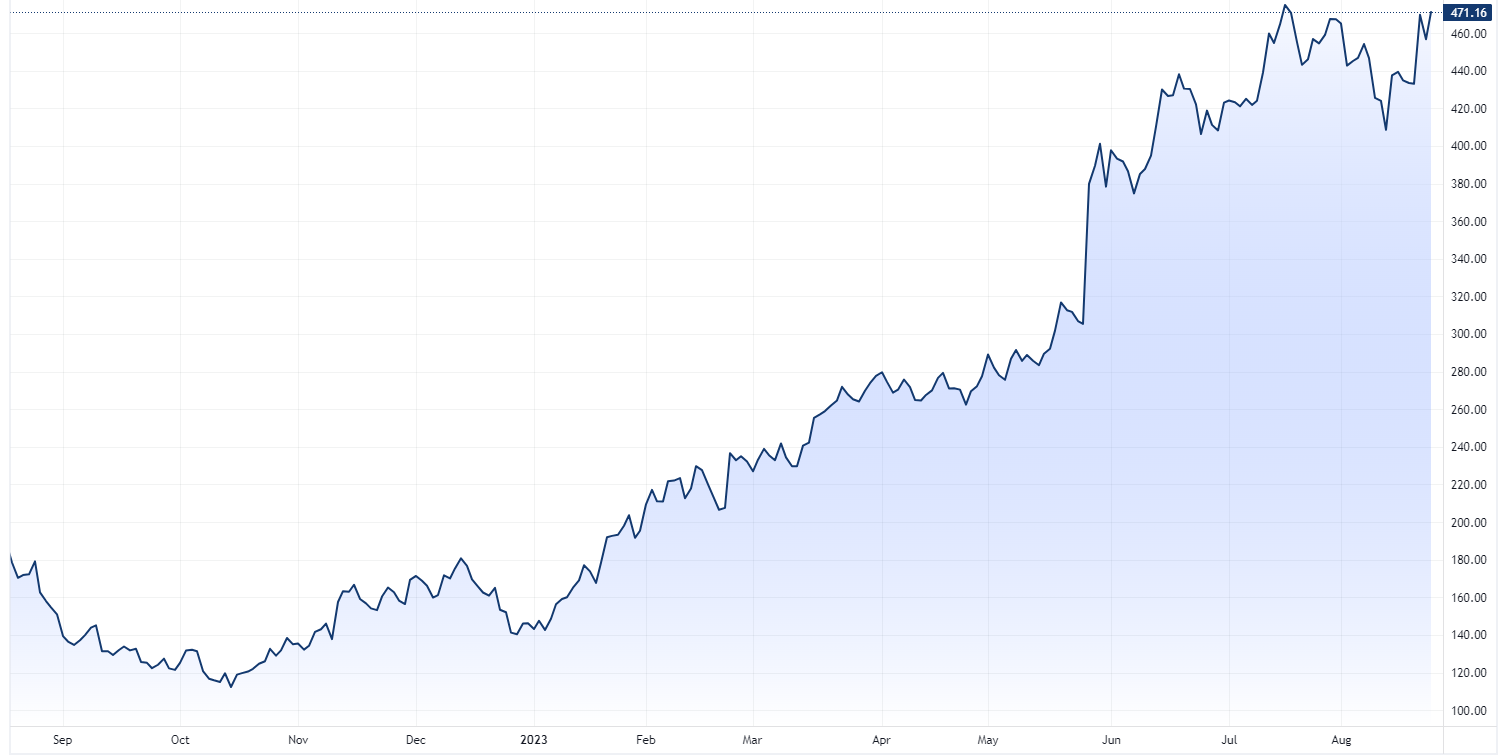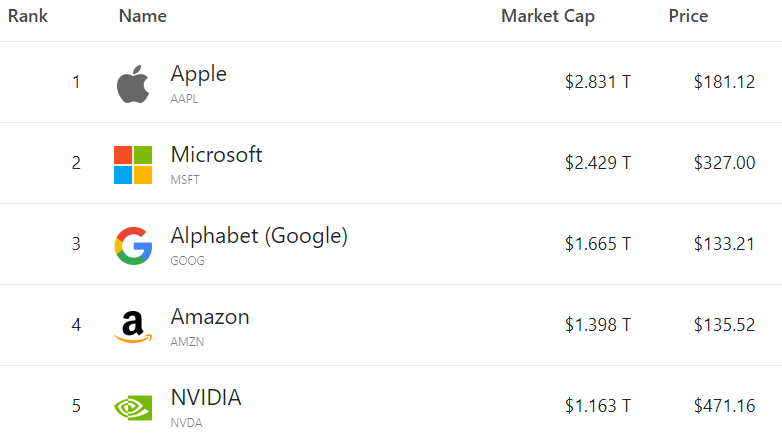The bull and bear case for Nvidia
Nvidia made easy work of Wall Street’s earnings expectations and guided to even more explosive growth, proving to the market that artificial intelligence is more than just a buzzword. The result was released after market close on Thursday, which sent the stock up 6.6% in after hours.
Results at a glance
For the second quarter, Nvidia reported:
- Record revenue of US$13.5 billion, up 101% year-on-year and above analyst expectations of US$11.2 billion
- Record data centre revenue of $10.3 billion, up 171% and above analyst expectations of US$8.0 billion
- Earnings per share of US$2.70, up 429%
- Approved US$25 billion in share repurchases
In terms of outlook:
Revenue is expected to be US$16 billion plus or minus 2% in the third quarter, which is approximately 170% higher than the prior year and well-above analyst expectations of US$12.6 billion
"During the quarter, major cloud service providers announced massive NVIDIA H100 AI infrastructures. Leading enterprise IT system & software providers announced partnerships to bring NVIDIA AI to every industry. The race is on to adopt generative AI,” said CEO Jensen Huang.

Nvidia 12-month price chart (Source: TradingView)
Where to from here?
Shares in the chipmaker have risen 230% year-to-date, which places investors between a rock and a hard place – Is this a megatrend worth chasing or a bubble waiting to pop?
Nvidia has a 5 percent weighting in the Munro Global Growth Fund (ASX: MAET), placing it among its top holdings. But they’re not selling here. In fact, the AI story has more legs to run, according to Munro Partners CIO, Nick Griffin.
Is it too late to buy Nvidia?
“In our view, no. The stock is priced at a premium but is still a leading player in the AI and graphics chip markets, and we think consensus estimates are way too low. We anticipate the company to do roughly $20 in earnings per share next year, which puts it on approximately 25x forward earnings,” says Griffin.
“The key question is whether that is the peak, as this is a demand pull forward or whether the company can still grow from there. We think it will grow from there, but definitely at a slower rate.”
Where is the stock headed over the next 12-18 months?
“Higher. Our bull case suggests it can get to $900. But if this is a pull forward in demand, and next year is the peak, then the downside is roughly $350,” he said.
For perspective, the current share price is $471. The bull and bear scenarios suggest an upside of 91% and downside of 26%.
“So, in our opinion, the risk-reward is still good. Investors should question whether they see themselves using these generative AI products at scale going forward. Will they sign up for Microsoft Co-pilot? How often do they use Chat GPT or Bard? Are they stuck watching short form video on Instagram? If the answer is yes, then Nvidia should keep winning as the use cases scale over the years ahead, and this is actually just the beginning.”
The $900 bull case implies a market cap of approximately US$2.2 trillion, which would make Nvidia comparable to the likes of the US$2.8 trillion Apple and US$2.4 trillion Microsoft.

Current US companies by market capitalisation (Source: Companies Market Cap)
Megacap tech stocks are leading the rally this year, can a result like this single-handedly prop up markets?
“Potentially. The S&P 500 is not really the economy. People often confuse the two. Nvidia is the 5th biggest company in the world by market cap, and consensus estimates for next year need to increase at least 50%. We believe stocks follow earnings in the long run, so this will likely help the market short term,” said Griffin.
What other companies could benefit from Nvidia’s growth moving forward?
“The shift to generative AI and accelerated computing specifically benefits Nvidia, their supply chain like TSMC etc., and the hyperscale cloud providers in Amazon, Google and Microsoft. They are the shovels in this boom,” he says.
“There will be some applications built on top of these models that come out of nowhere, in the same way, apps exploded on the iPhone, but we haven't got a good line of sight on those just yet as we are still at the beginning.”

2 topics
1 stock mentioned
1 fund mentioned
1 contributor mentioned

